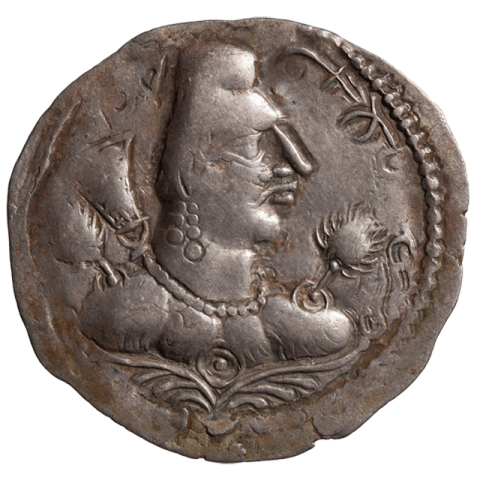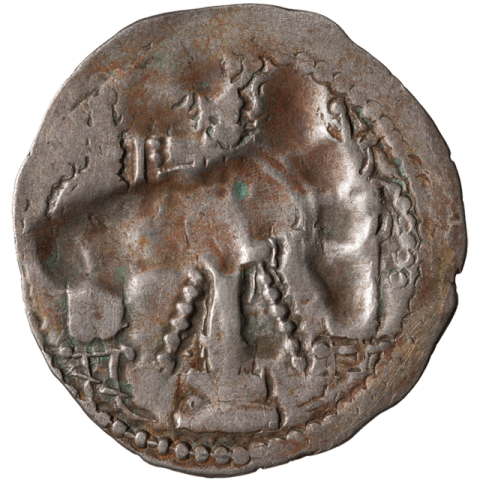The custom of artificial cranial deformation spread into Central Europe during the Great Migration especially with the Huns in the 5th century CE. It was subsequently adopted by Germanic groups, and there is evidence of skull deformation east of the Theiss River into the 8th century CE (see Tobias – Wiltschek-Schrotta – Binder 2010, p. 296-299).
The artificially elongated skull is interpreted as a sign of high social status. This can be seen on the coinage of the Alkhan Huns in Gandhara (Pakistan); starting in the middle of the 5th century CE the kings proudly display their elongated skulls on the coins, distinguishing themselves from all other social groups.
Cranial deformation can only be conducted during infancy and early childhood and is achieved through bandaging the head thereby guiding the growing bones.
This movie examines the background of the deformed Hun skull including its development and meaning.
A. Drachm (silver) of an unknown Alkhan king with an artificially deformed skull (5th century)
Mint in Gandhara (Pakistan) KHM, MK Inv.-Nr. GR 43311


